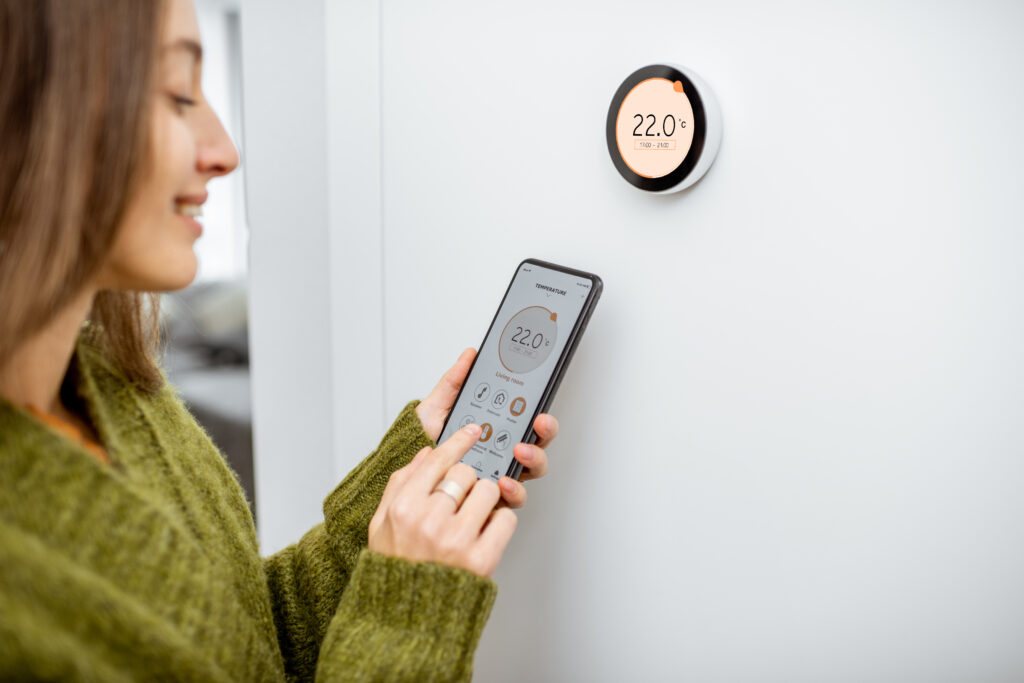Winter is a challenging time for your plumbing system. Freeze-thaw cycles outdoors cause fluctuations in temperature and pressure within your plumbing pipes, slowing water flow and potentially causing pipe freezing. Learn how to prevent inconsistent water temperature this winter with these top Minnesota plumbing tips.
Winterize Your Plumbing System.

Winterizing your plumbing system is crucial to preventing cold water, frozen pipes, and water damage. Here are the top winterizing steps to consider at the beginning of this winter season.
- Insulate exposed pipes: Pipes exposed to the outdoor climate are at risk of freezing and bursting. To prevent ice buildup in your plumbing pipes, consider purchasing foam pipe insulation from your local home maintenance store and fitting it around uncovered areas.
- Disconnect outdoor hoses: Before the first freeze, always disconnect all outdoor hoses, drain them completely, and store them in a dry area. Then, turn off all connections to outdoor faucets and drain them until no water remains.
- Insulate water heater: If your water heater is in a cold area, such as a garage or basement, it’s beneficial to wrap the tank with an insulation blanket to protect against the cold. This will also prevent heat loss and improve your water heater’s performance.
- Drip faucets: Let the faucets drip steadily to prevent frozen indoor pipes. This winterizing method encourages water movement within the pipes and prevents freezing. The faucet dripping approach is especially essential if you’re away traveling and your daily faucet use is limited.
- Keep cabinet doors open: Cabinets can block home heating from pipes at risk of freezing. Crack the cabinets underneath your home sinks slightly open to improve warm air circulation to your cold pipes.
Upgrade Your Water Heater.
If your water heater reaches or exceeds its average lifespan, consider upgrading it to a more recent model. Old water heaters slowly deteriorate over time. Corrosion and natural wear and tear produce fluctuating water temperatures and low-quality, rusty water. New water heaters have higher efficiency ratings and come with several benefits. They’re more likely to be energy-efficient and save you cash on your utility bill. Modern water heaters also boast advanced technology, such as digital controls and programmable components, that make their use easy and convenient.
Invest In A Smart Thermostat For Temperature Regulations.

In 2023, HVAC technology has come a long way to give homeowners ease of use, cost savings, and unique integrations. For example, smart thermostats enable precise control over your heating and cooling settings. They can allow you to adjust your temperature based on your schedule. So if you’re at work, you can pay less for heating. They also improve energy efficiency by providing detailed energy use reports, giving you insights into your heating and cooling patterns, and offering solutions to reduce usage.
Smart thermostats also offer several home integrations for easier access and simple use. If you have a smart device such as Amazon Alexa or Google Assistant, you can sync your thermostat to your device to use the voice access features. Weather integrations can also be helpful to maintain a consistent temperature. Your thermostat will automatically adjust according to the outside temperature and weather.
Follow Regular Maintenance Tips For Consistent Hot Water.

Regular hot water system maintenance can extend its lifespan, improve energy efficiency, and prevent breakdowns in the winter. To maintain a reliable water heater year-round, follow these essential hot water maintenance tips:
- Set a consistent temperature: It’s generally recommended to keep your water heater’s temperature at 120℉ in the winter. This is a cozy and safe temperature that prevents overheating and overconsumption of energy.
- Flush the water heater: Technicians recommend flushing your water heater every six months to remove debris buildup and prevent corrosion.
- Check the pressure relief valve: It’s critical to test it at least once a year to ensure it functions correctly. Lift the lever, and hot water should be released. If the valve doesn’t operate correctly, it should be replaced for the safety of your home.
- Replace the anode rod: The anode rod is a long aluminum rod that halts rust buildup and lengthens your water heater’s lifespan. By replacing this every 4-5 years, you can reduce the wear and tear that comes with age.
- Check for corrosion: Keep a close eye on your water heater’s appearance for signs of wear and tear. Corrosion is visible through water heater tank cracks and rust buildup. If there are excessive amounts of deterioration, it may be best to replace the entire system.
- Schedule an inspection: Finally, ensure your water heater has an annual maintenance and check-up appointment to identify any underlying issues and prevent costly repairs.
Discover Reliable Water Heating Solutions With Mike's Custom Mechanical.

Blustery winter storms are headed your way, so start the winter off right. Our HVAC team at Mike’s Custom Mechanical can prepare your home to withstand ice, snow, and blizzard conditions through water heater maintenance and repair services. Minnesota winters can be hazardous without a trustworthy water heater system, so safeguard your home and family with regular maintenance or necessary repairs. Call us at (763) 568-7148 or contact us to schedule a water heater repair in Maple Grove today.



